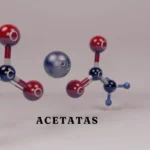Introduction to Acetates
Acetatas play a vital role in our everyday lives, often flying under the radar while making significant impacts across various industries. From textiles to medicine, these versatile compounds have carved out an essential niche for themselves. But what exactly are acetates? In this blog post, we’ll delve into their chemical properties and explore the multiple ways they are used—from creating fashionable garments to advancing medical technologies. Get ready to uncover the fascinating world of acetates and discover why they matter more than you might think!
The Chemical Composition and Properties of Acetates
Acetates are esters derived from acetic acid. Their chemical backbone primarily consists of the acetate ion, CH3COO–. This simple structure grants them unique properties that make them versatile across various applications.
One notable property is their solubility in water and organic solvents. This characteristic allows acetates to be easily integrated into diverse formulations, enhancing product functionality.
Moreover, acetates exhibit a low melting point and excellent film-forming capabilities. These attributes make them ideal for use in coatings and adhesives, offering durability without compromising flexibility.
The stability of acetates under varying temperature conditions also adds to their appeal. They maintain performance integrity whether used in textiles or packaging materials, contributing to longevity and reliability.
The balance between chemical composition and physical properties positions acetates as essential compounds across multiple industries. Their ongoing research continues to unveil even more possibilities within science and technology.
Common Uses in the Textile Industry
Acetates play a vital role in the textile industry, primarily because of their versatility and aesthetic appeal. Often derived from natural cellulose sources, these fibers are appreciated for their silk-like texture.
One significant application is in clothing production. Acetate fabrics drape beautifully and offer excellent breathability. This makes them ideal for evening wear and formal attire.
Additionally, acetates are commonly used in linings due to their smooth finish. They provide comfort while maintaining shape and structure within garments.
The dyeing process also benefits greatly from acetates. These fibers absorb colors vividly, resulting in rich hues that enhance garment designs.
Beyond apparel, acetate blends find usage in home textiles like curtains and upholstery fabric. Their durability combined with an elegant appearance makes them perfect for stylish interiors.
Industrial Applications in Manufacturing and Packaging
Acetates play a pivotal role in various industrial applications, particularly in manufacturing and packaging. Their versatility is one of their strongest assets.
In the realm of manufacturing, acetates are integral to creating a wide range of products. They serve as solvents and plasticizers, enhancing flexibility and durability. This ensures that items can withstand wear and tear over time.
When it comes to packaging, acetates shine through their ability to create barrier films. These films protect contents from moisture, oxygen, and light degradation. As a result, they extend shelf life for food products while maintaining quality.
Additionally, acetate materials can be easily printed on or laminated. This feature allows brands to showcase vibrant designs without compromising functionality.
As industries continue seeking sustainable alternatives, the demand for eco-friendly acetate formulations is likely to grow. This shift will pave the way for innovative developments in both manufacturing processes and end-product performance.
Medical Uses and Advancements with Acetates
Acetates play a vital role in the medical field. They are used to create various pharmaceutical formulations, enhancing drug solubility and stability.
One significant advancement has been the use of acetate-based polymers in drug delivery systems. These materials can control the release rate of medications, improving patient outcomes.
Moreover, acetates have found their way into wound dressings and implants due to their biocompatibility and flexibility. This adaptability ensures that these products can conform well to body contours.
Recent research is exploring how acetates can be utilized in targeted therapies for specific diseases like cancer. The potential for personalized medicine is immense with these adaptable compounds.
As innovations continue, we may see even more groundbreaking applications of acetates within healthcare that enhance treatment efficacy and patient comfort.
Environmental Benefits of Using Acetates
Acetates are gaining attention for their environmental advantages. Made from renewable resources, they offer a sustainable alternative to petroleum-based products. This transition reduces the carbon footprint associated with traditional materials.
Biodegradability is another key benefit of acetates. Unlike many synthetic fibers, which can linger in landfills for decades, acetates break down more easily in natural environments. This property helps minimize waste and pollution.
The production process of acetates typically requires fewer harmful chemicals than other synthetic processes. This leads to cleaner manufacturing practices and less toxic runoff in ecosystems.
Moreover, utilizing acetates supports the circular economy model by being recyclable. Products made from acetate can be repurposed or transformed into new items rather than discarded after use.
These factors make acetates an appealing choice for industries looking to enhance their sustainability efforts while meeting consumer demand for eco-friendly solutions.
Future Innovations and Potential for Acetates
The future of acetates is brimming with possibilities. As industries evolve, so does the demand for innovative materials that are both efficient and sustainable.
Researchers are exploring biobased acetates sourced from renewable resources. This shift could significantly reduce environmental impact while maintaining performance standards.
Additionally, advancements in nanotechnology may lead to new applications in electronics and energy storage solutions. Acetates can be engineered at a molecular level to enhance conductivity or flexibility, opening doors to cutting-edge products.
There’s also growing interest in smart textiles incorporating acetate fibers that adapt to temperature changes or moisture levels. Such innovations promise increased comfort and functionality in everyday wear.
As regulatory frameworks tighten around sustainability, companies are likely to invest more heavily in acetate research. The potential for acetates continues to expand across various sectors, paving the way for groundbreaking developments that resonate with eco-conscious consumers.
Conclusion
Acetates are versatile compounds that have become integral to multiple industries. Their unique chemical properties make them suitable for a variety of applications, from textiles to medical uses.
As the demand for sustainable materials continues to grow, acetates offer an eco-friendly alternative that reduces environmental impact while maintaining functionality. Innovations in acetate production and application promise even greater advancements in the future.
With ongoing research and development, it is clear that the role of acetates will only expand. Industries are likely to find new ways to harness this compound’s potential, leading to exciting possibilities ahead. The future looks bright for acetatas as they continue making strides across different sectors.
FAQs
What is “acetatas”?
Acetatas are esters from acetic acid, valued for their diverse uses in textiles, manufacturing, packaging, and medicine due to their unique chemical properties.
How are acetatas used in the textile industry?
Acetatas are utilized in textiles for their smooth, silk-like texture, making them ideal for garments, linings, and home furnishings with vibrant color absorption.
What role do acetatas play in manufacturing and packaging?
In manufacturing, acetatas enhance flexibility and durability as solvents and plasticizers. In packaging, they create protective films that extend product shelf life.
What medical applications involve acetatas?
Acetatas are used in pharmaceuticals for controlled drug release, and in medical dressings and implants for their flexibility and biocompatibility.
What are the environmental benefits of acetatas?
Acetatas offer sustainability by being biodegradable, made from renewable resources, and requiring fewer harmful chemicals in production compared to synthetic alternatives.







